This post may contain affiliate links. If you click through a link and make a purchase, I may receive a commission at no additional cost to you. As an Amazon Associate, I earn from qualifying purchases. Read the full disclosure here.
Due to the repetitive nature of the running gait cycle, runners can be at risk for a variety of overuse and stress reaction injuries.
A running injury can pop up rather quickly but can take weeks or even months to fully resolve, especially when you ignore early signs.
Avoid a long and painful rehab by getting symptoms addressed early.
Here are some of the most common running injuries to look out for, plus simple tips to prevent them.
Let’s dive in!
Disclaimer: This content is for educational purposes and is not medical advice. Read the full disclaimer.
1. Achilles tendonitis
The Achilles tendon attaches the two major calf muscles (gastrocnemius and soleus) to the heel.
Every time you toe off during the running cycle, force is transferred through the Achilles tendon. When the tendon becomes inflamed, pain is felt in the back of the ankle along the tendon.
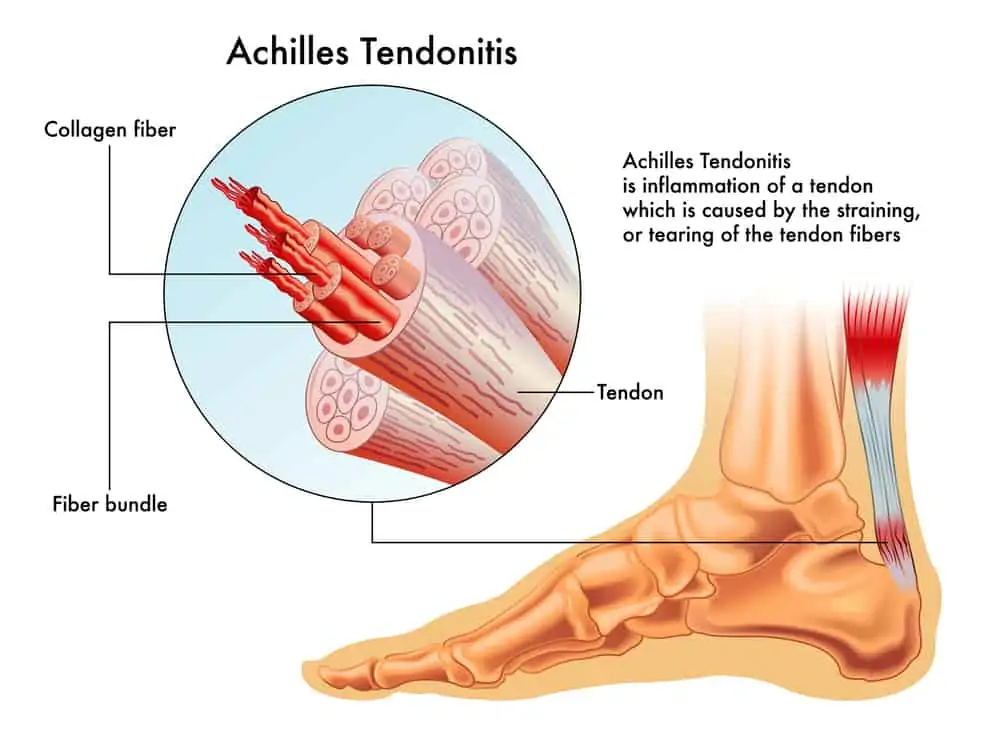
Risk factors
Risk factors for developing Achilles tendinopathy include weakness in the calf muscles, excessive hill running, and/or speedwork.
If you feel any lumps or bumps along the tendon you should see a doctor immediately.
Releated reads: Why Does My Achilles Always Feel Tight? (14 Possibilities) & Exercises To Avoid With Achilles Tendonitis
2. Plantar fasciitis
The plantar fascia is a thick band of connective tissue on the underside of the foot that helps support the arch of the foot through the gait cycle.
Plantar fasciitis presents as heel pain and is typically worse in the morning and/or with prolonged activity.
Traditionally thought to be caused by inflammation and overuse, new evidence suggests that a lack of blood flow may also cause plantar fasciitis.
If you’ve been struggling with plantar fasciitis, don’t miss Surprising Reasons Why Your Plantar Fasciitis Isn’t Getting Better.
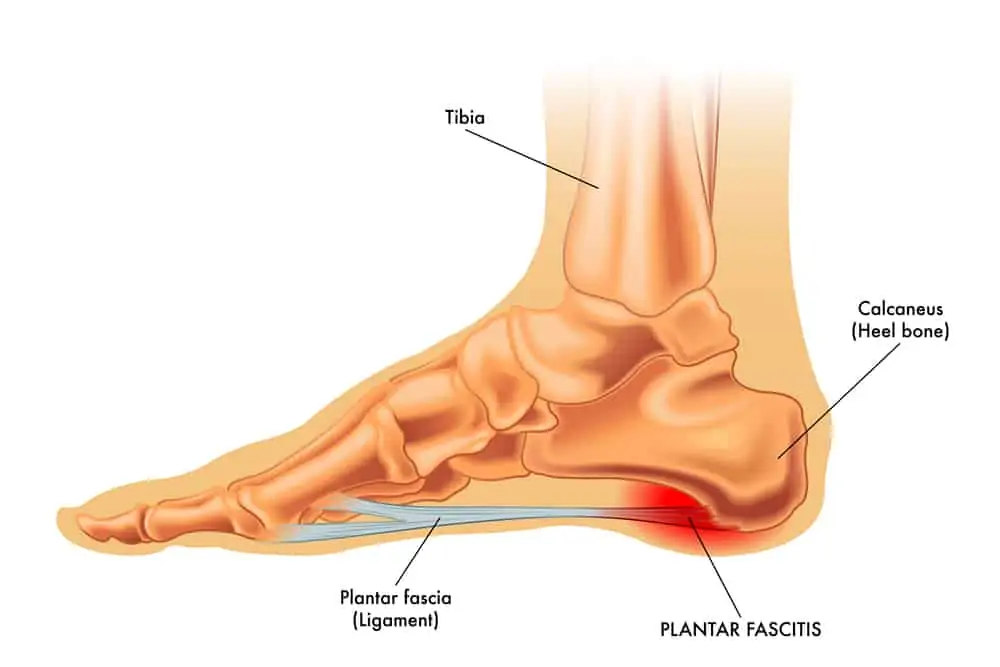
Risk factors
Foot and other lower extremity mechanical dysfunctions can be risk factors for plantar fasciitis, which is why only focusing on the foot doesn’t always solve the problem.
Your foot’s structure and mechanics also play a role, which is why it’s important to get the right sneakers for your foot and customize with orthotics if needed.
Tight calf muscles and flat feet are common culprits in plantar fasciitis. Learn how to stretch and mobilize the calves and ankles here.
3. Shin splints
Shin splints (a.k.a. medial tibial stress syndrome) are inflammation surrounding muscle tissue/tendons and bone tissue of the tibia.
The pain is felt as pain along the inside of the lower leg between the tibia and the calf.
Shin splints may present similarly to a tibial stress fracture of the tibia.
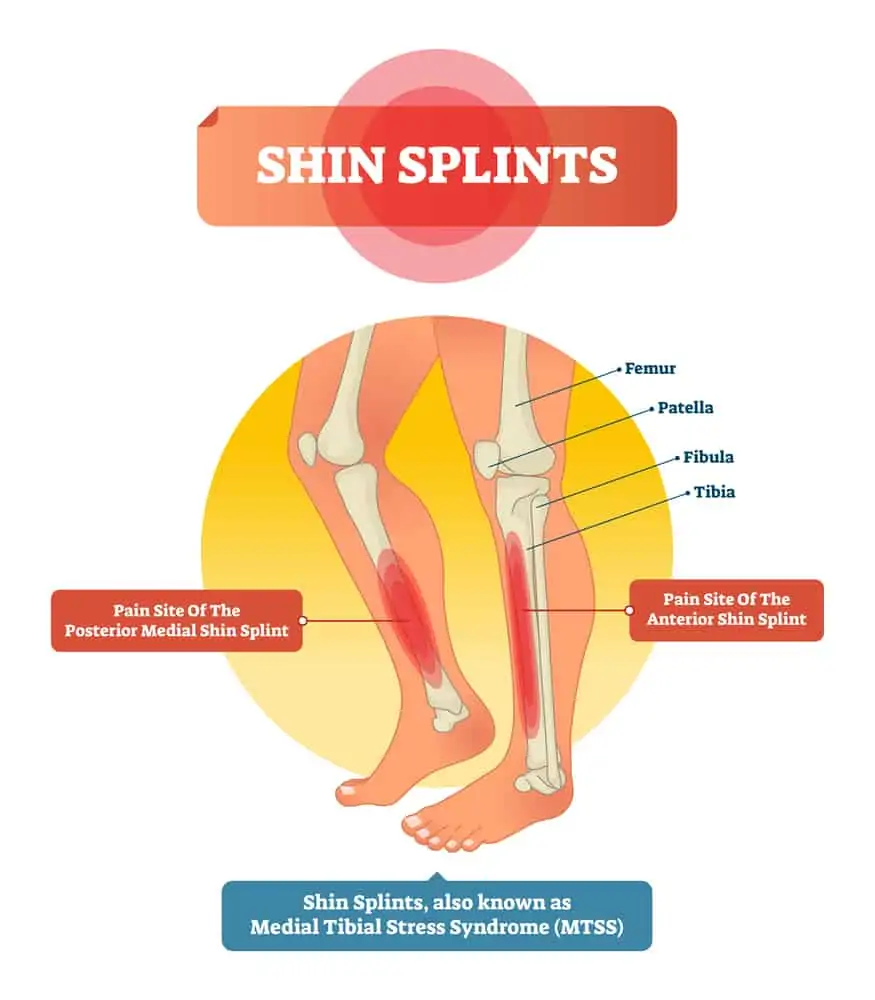
Risk factors
Hyperpronation (excessive pronation or collapsing of the arch) of the foot, muscle imbalances, and decreased flexibility of the calf muscles are common risk factors.
Other risk factors include training errors such as rapid progression or returning to running after some time off.
4. Stress fractures
The body absorbs a lot of stress with running.
Stress fractures are small cracks in the bone that can occur due to overtraining without enough time for the body to heal.
Common areas for stress fractures in runners are the metatarsal bones in the feet and bones of the lower leg, such as the tibia (shin bone). Stress fractures also tend to be more common in women. Certain hormones and bone density plays a role in bone integrity.
Imaging will help confirm a diagnosis. Stress fractures require rest to heal.
Risk factors
Overtraining, poor nutrition, and poor footwear choices can contribute to developing a stress fracture.
Stress fractures may initially present like other injuries such as shin splints, so it’s essential to get the pain checked out early to avoid a prolonged recovery.
Wearing the right type of shoe and replacing at regular intervals can help prevent stress fractures in the feet and lower legs.
5. Iliotibial band syndrome
The iliotibial band (a.k.a. the IT Band) is a thick band of fascia that contributes to the leg’s lateral stability.
The IT Band connects the TFL (tensor fascia latae) muscle and gluts at the hip with the lower leg.
ITB Syndrome is felt as knee pain (on the outside of the knee) from repetitive flexion and extension motions of the knee during running.
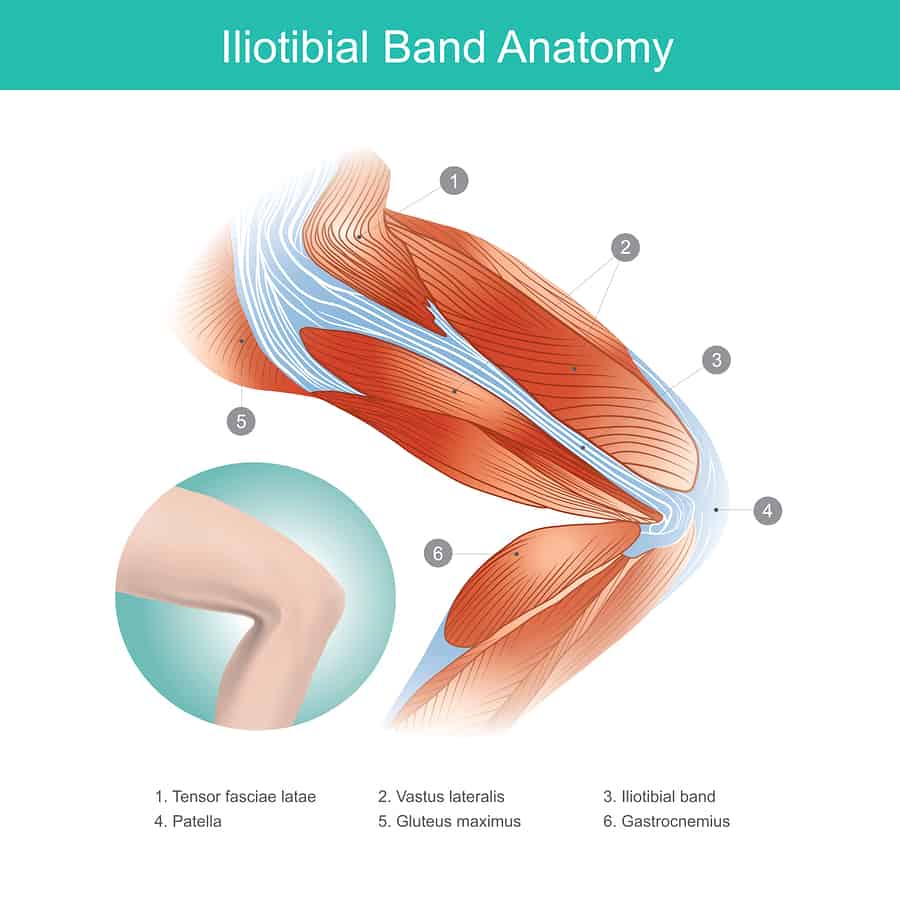
Risk factors
Common causes of IT Band syndrome are weak hip/glut muscles or biomechanical dysfunction of the lower leg altering alignment.
A common misconception is that you can stretch or foam roll the ITB to treat pain.
IT Band syndrome is best treated with a comprehensive program identifying the dysfunction which caused it in the first place to rebalance muscle strength and mechanics.
For an in-depth look at IT Band Syndrome, head over to this article.
6. Muscle strain
A strain (commonly referred to as a pulled muscle) can occur in any muscle tissue. Strains are small tears in the tissue-the more severe the strain, the greater the muscle tear.
Hamstring and calf muscle strains are common running injuries.
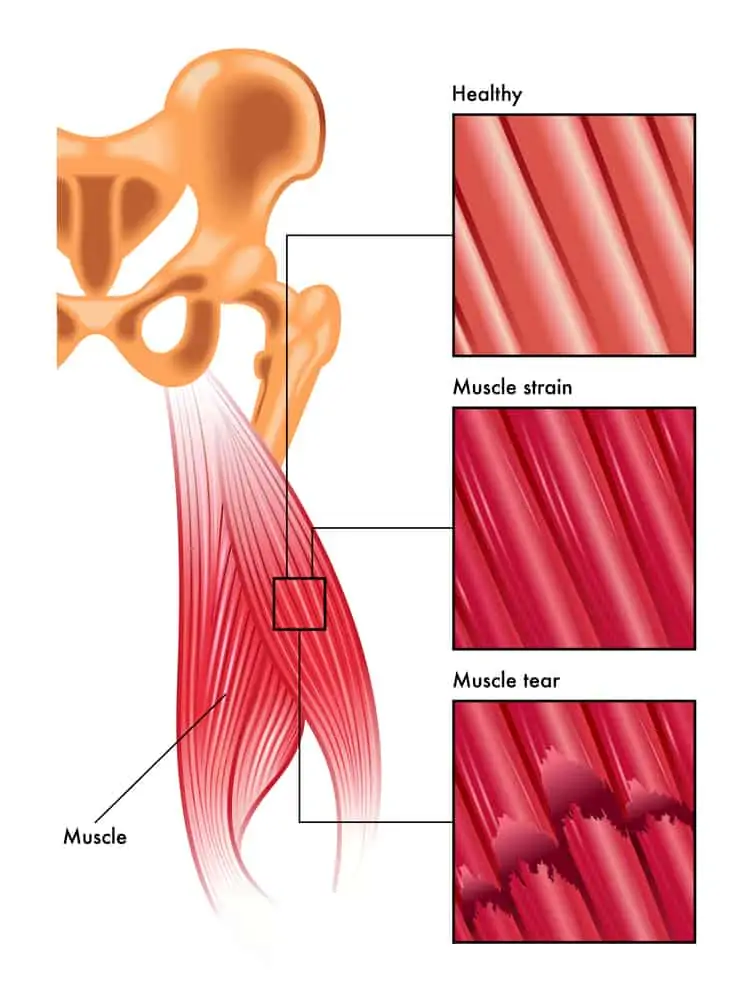
Risk factors
Muscle strains can occur with sudden movements, improper warm-up, overexertion, and fatigue.
7. Runner’s knee (patellofemoral syndrome)
Patellofemoral pain syndrome (sometimes referred to as runner’s knee) is an inflammation underneath the knee cap due to altered forces on the knee cap.
When mechanics change, usually at the foot or hip, this can affect the forces and pressure on the knee cap and place additional stress on the underside of the kneecap causing pain.
Patellar tendinitis (irritation in the tendon between the knee cap and lower leg) may also accompany runner’s knee.
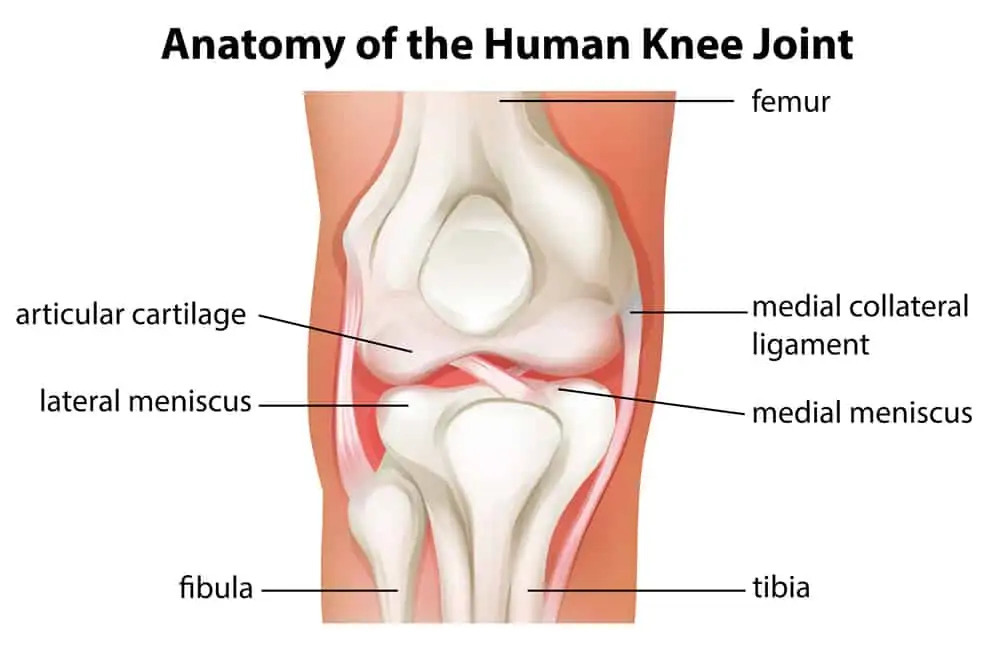
Risk factors
Patellofemoral pain affects women more than men due to the difference in hip/pelvis structure and how this affects the angles of the knee.
Patellofemoral pain is also more painful during stair climbing, hills, and uneven terrains.
Muscle weakness, especially in the quads, can also contribute.
How to prevent common running injuries
Here are some easy injury prevention tips to help you stay at least one step ahead of the pain.
Wear proper running shoes
New-onset aches and pains can be a signal to replace shoes.
Wear the proper shoes for your foot type and replace shoes at regular intervals based on your mileage. A starting point guideline is every 300-400 miles.
Many running stores have staff trained to offer suggestions based on your gait and foot type. Consider adding custom or over-the-counter orthotics to further customize for your foot if needed.
A podiatrist or physical therapist will also be able to help make recommendations.
Don’t skip proper warm-ups
Don’t skip warm-ups and cool-downs.
A 5-10 min light warm-up is essential to prepare your body for activity and decrease the risk of injury.
Focus on form, especially when fatigued.
Progress distance/terrain smartly
Rapid increases in distance or speed can set you up for injury.
Uneven or less supportive terrains such as sand or trails can significantly increase the challenge and demand on your body.
Several studies suggest progressing more than 10% per week significantly raises your chance of injury. Whether or not 10% is suitable for you will depend on individual factors.
Try this quick and easy running pace calculator to help you plan your speed for smart training.
Don’t ignore injuries
No pain, no gain can get you into trouble.
Chronic inflammation not only can cause degenerative changes to tissues and set you up for a more severe injury down the road, but you can also develop other overuse injuries as a result of changing your mechanics because of the first injury.
Get your symptoms addressed early.
Cross train with other activities
Cross-training, especially strength training and mobility, can make you a better runner and help prevent running injuries.
Running does not include side-to-side motion, so make sure not to ignore muscle groups such as the hip abductors, which provide valuable stability during a run.
Yoga is also a wonderful complementary activity. Check out my YouTube channel for plenty of short yoga practices targeting tight calves, tight hips, and more.
Give yourself time to recover
Don’t underestimate the importance of recovery. The body requires rest to function properly, heal, and prevent injuries.
Plan your training to include recovery and cross-training activities.
If you’re looking for some low-impact alternatives to running for your off days, read this article.
Caution with bracing or taping yourself
Kinesiology tape can make things worse if the tape falls into the wrong hands.
Make sure you’ve been instructed to properly tape yourself by someone trained in therapeutic taping techniques. Check out this article for pro tips on how to get your tape to actually stay on.
Braces can also lead to a false sense of security and aren’t fixing the underlying issue for why you got pain in the first place.
For all the details on how to use kinesiology tape safely, read this article.
See a physical therapist
You don’t need to wait until an injury to get physical therapy.
A therapist trained in functional movement assessment can perform a screen to see any significant areas of concern that could contribute to an overuse injury.
They can then prescribe a home program including stretching, strengthening, and mobility work to add to your routine.
If you’re a serious runner, look for a physical therapist that has experience working with runners.
You can also try working with a running coach. Running coaches can assist with proper training, form, cross-training, goals, and injury management.
Listen to your body
A prime time for injuries is when we become fatigued.
Focus on form and other fundamentals and avoid pushing through when things don’t feel right.
Wrapping up
Many of these injuries can be attributed to repetitive stress from poor footwear, improper training techniques, or altered biomechanics.
If you start to notice discomfort, be sure to get your symptoms checked out sooner than later to avoid a more serious injury.
References
Nielsen RO, Buist I, Sørensen H, Lind M, Rasmussen S. Training errors and running related injuries: a systematic review. Int J Sports Phys Ther. 2012;7(1):58-75.
van der Worp MP, ten Haaf DS, van Cingel R, de Wijer A, Nijhuis-van der Sanden MW, Staal JB. Injuries in runners; a systematic review on risk factors and sex differences. PLoS One. 2015;10(2):e0114937. Published 2015 Feb 23. doi:10.1371/journal.pone.0114937

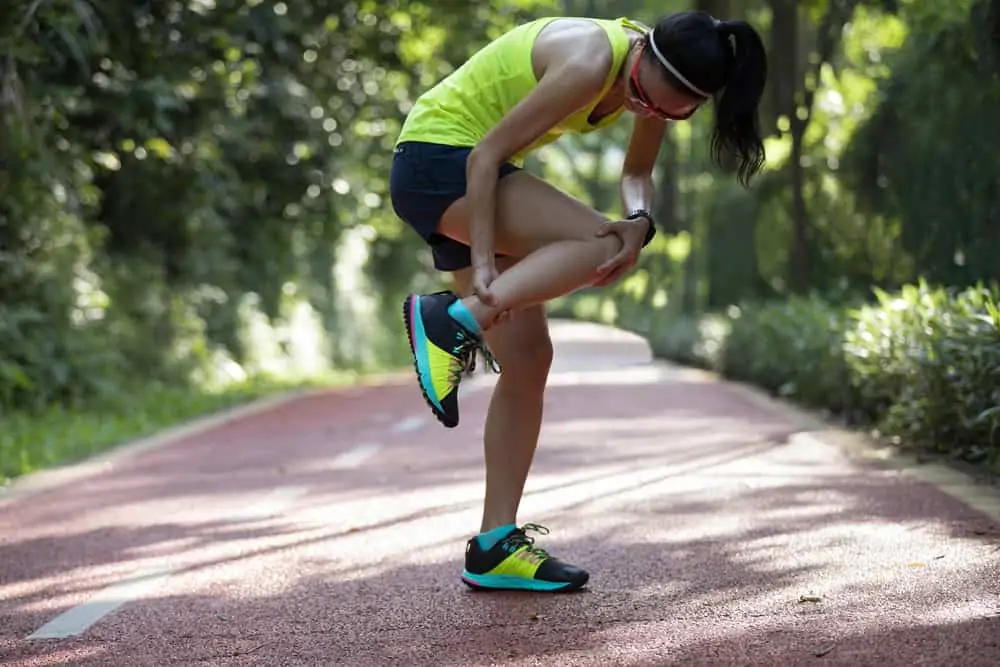
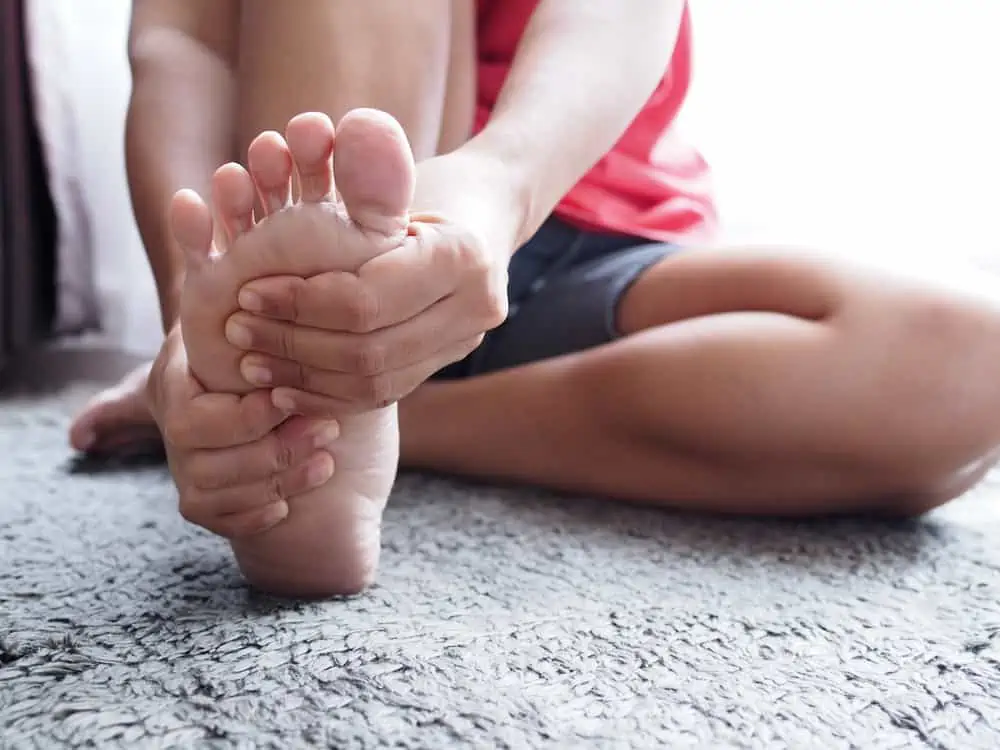

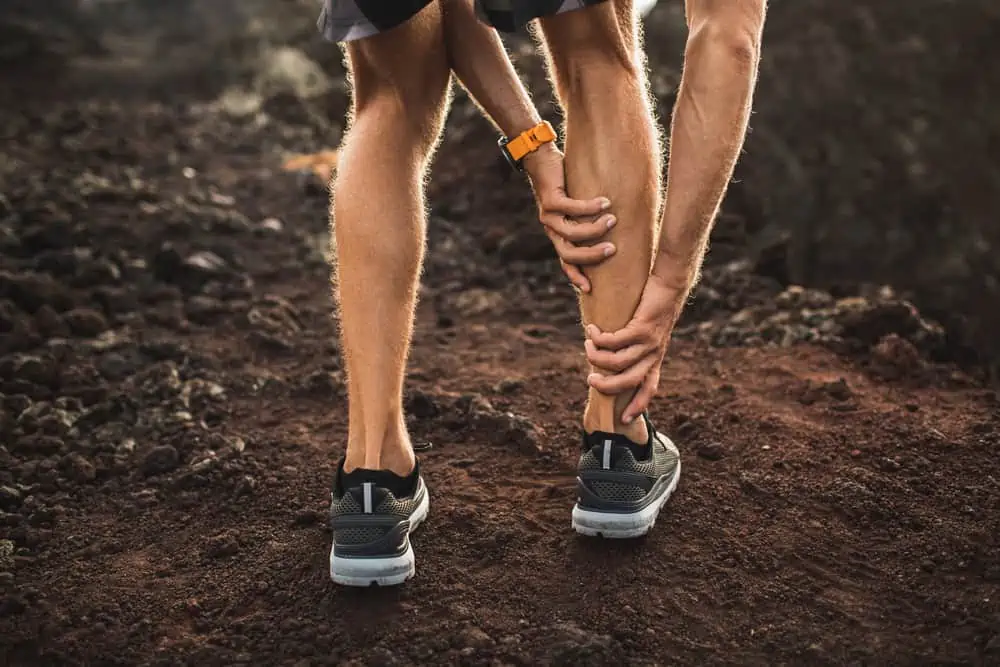



This is an excellent post with very informative tips. You have to listen to your body and make sure you get it checked out when you’re feeling any discomfort that is not going away. Thank you for sharing!
My brother is a runner, I’ll definitely share this post with him!
I just started running. I glad I found your blog post. I was concerned about muscle strain. I know that I need to get better sneakers for running. This is all great tips.